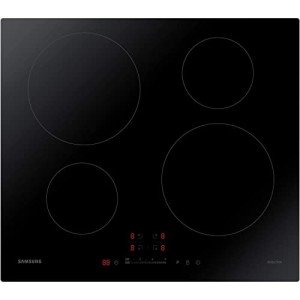Induction Hob Installation: A Comprehensive Guide
Induction hobs have gotten appeal in modern kitchen areas due to their energy performance, speed, and precision in cooking. Unlike traditional gas or electrical cooktops, induction hobs use electromagnetic energy to straight heat pots and pans. Induction Hob Specifications enhances cooking performance however likewise boosts safety by lessening the risk of burns. Nevertheless, setting up an induction hob requires mindful preparation and consideration of different aspects. This post offers a detailed guide to induction hob installation, along with vital tips, benefits, and often asked questions.
Benefits of Induction Hobs
Before delving into the installation procedure, let's explore some benefits of induction hobs that make them a favored option for numerous households:
- Energy Efficiency: Induction hobs use less energy as they transfer heat directly to cookware, resulting in much faster cooking times and lowered energy expenses.
- Safety: The surface area of an induction hob does not get hot throughout cooking, considerably decreasing the threat of burns or fire threats.
- Easy Cleaning: The flat surface area of induction hobs makes them easy to clean, as spilled food does not get baked onto the surface.
- Accurate Control: Induction hobs make sure quick temperature level modifications, permitting exact control over cooking temperatures.
Secret Considerations Before Installation
1. Electrical Requirements
Induction hobs require a greater electrical output compared to basic electrical hobs. Ensure that your electrical supply satisfies the requirements of your particular induction model, generally 3 kW to 7.4 kW.
2. Pots and pans Compatibility
Induction cooking depends on magnetic pots and pans. Simplistically, if a magnet sticks to the bottom of your pots and pans, they appropriate for induction cooking.
3. Worktop Specifications
Your kitchen worktop should support the weight of the induction hob and accommodate the installation measurements. Guarantee that the worktop material is heat-resistant and ideal for kitchen area use.
4. Space Utilization
Consider the readily available area in your kitchen and how the induction hob will fit within that environment. You should also leave adequate clearance for air flow around the device.
Table 1: Induction Hob Dimensions and Space Requirements
| Induction Hob Size | Minimum Installation Depth | Minimum Clearance Height | Advised Countertop Thickness |
|---|---|---|---|
| 30 cm | 60 cm | 30 cm | 2.5 cm to 4 cm |
| 60 cm | 60 cm | 30 cm | 2.5 cm to 4 cm |
| 90 cm | 60 cm | 30 cm | 2.5 cm to 4 cm |
Step-by-Step Guide to Installing an Induction Hob
This section supplies a detailed installation procedure, guaranteeing that your induction hob is established safely and properly.
Step 1: Gather Required Tools and Materials
- Induction hob
- Screwdriver
- Level
- Measuring tape
- Underlay or insulation products
- Electrical wiring (seek advice from a professional electrical contractor)
Step 2: Prepare the Worktop
- Step the Installation Area: Ensure that the worktop has adequate space for the hob. Use a determining tape, and mark the outlines of the required cut.
- Cut the Opening: Using an appropriate saw, cut the opening in the worktop, making sure smooth edges.
- Clean the Area: Remove any debris or dust from the cut area to get ready for installation.
Step 3: Position the Hob
- Location the Hob: Carefully place the hob in the prepared opening, ensuring it is level.
- Protect with Clips: If your model features installation clips, utilize them to protect the hob to the worktop.
Step 4: Electrical Connection
- Connect to Power Supply: This step ought to be brought out by a qualified electrician. Follow the producer's directions for circuitry, making sure that all connections are protected and abide by regional electrical regulations.
Step 5: Check for Leaks
- After linking the induction hob, turn it on to evaluate its functionality. Make sure there are no gaps in between the hob and worktop that could result in water ingress.
Step 6: Finalize the Installation
- As soon as tested, ensure that all screws are tightened up, and the hob is flush with the worktop. Tidy the surface to remove any finger prints or debris.
FAQs about Induction Hob Installation
1. Is it safe to install an induction hob myself?
While DIY installation is possible for those with electrical knowledge, it's advisable to work with an expert electrical contractor to guarantee security and compliance with local guidelines.
2. What are the typical concerns throughout installation?
Typical issues consist of inaccurate measurements, failure to examine pots and pans compatibility, and inadequate electrical supply.
3. Can I set up an induction hob over a drawer or cabinet?
It is not advised to set up an induction hob straight over a drawer without suitable heat insulations, as it might trigger damage to the cabinets.
4. How do I know if my pots and pans works?
Conduct a simple magnet test. If the magnet adheres to the bottom, your pots and pans is induction compatible.
5. What should I do if the hob does not warm up?
Check the power supply and confirm that the hob is properly set up. If problems continue, seek advice from the manufacturer's support or a certified specialist.
Induction hobs use a modern and efficient cooking service that can improve any kitchen area. While installation may appear daunting, understanding the requirements and following an extensive guide can streamline the process. Prospective purchasers need to think about working with a professional for electrical connections to ensure security. With the right preparation and knowledge, installing an induction hob can transform cooking experiences in remarkable methods.
With this information at hand, possible users can make informed choices about transitioning to induction cooking and installing their brand-new hobs, causing a more secure and more efficient kitchen area.

